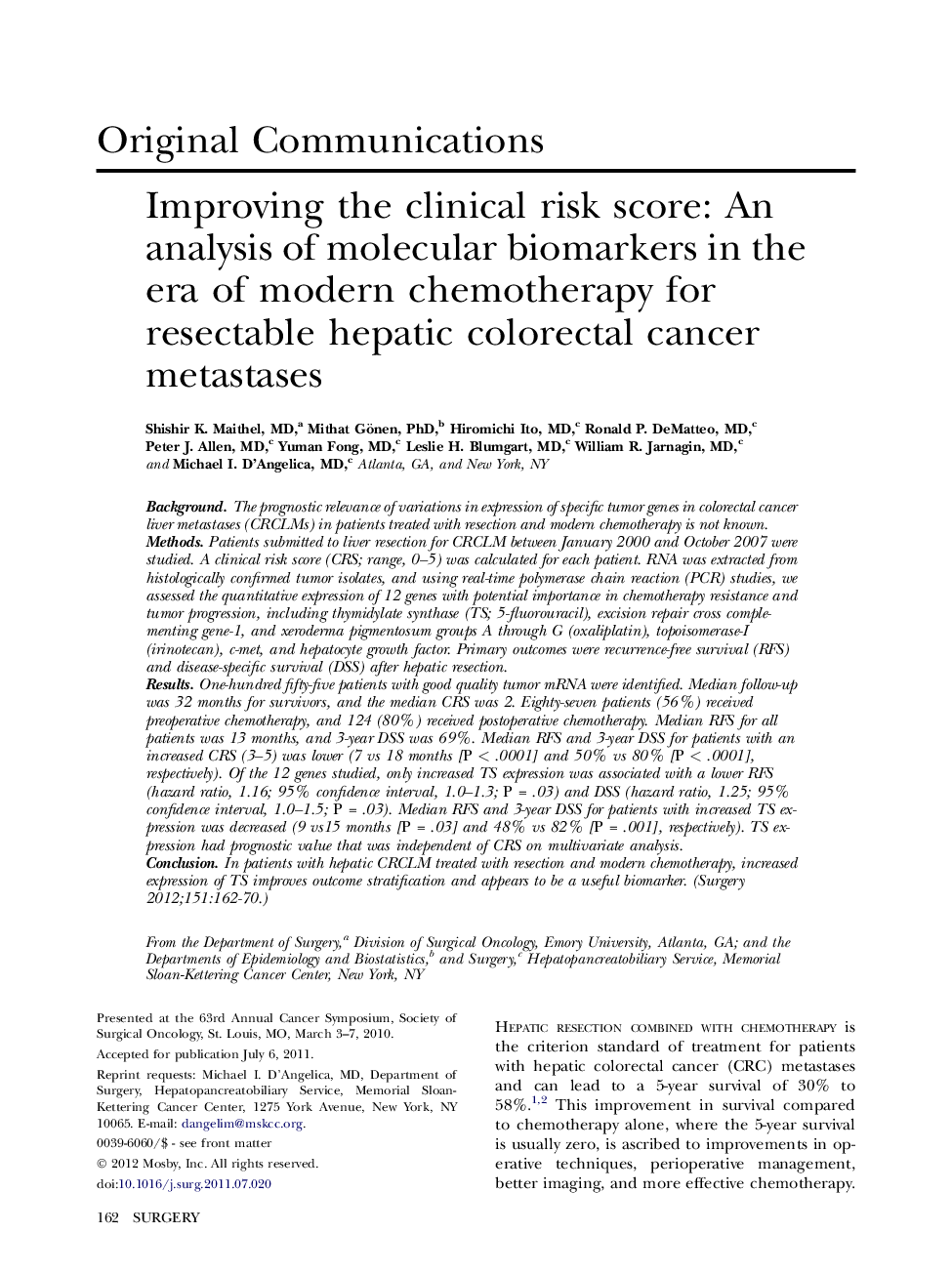| کد مقاله | کد نشریه | سال انتشار | مقاله انگلیسی | نسخه تمام متن |
|---|---|---|---|---|
| 4308197 | 1289273 | 2012 | 9 صفحه PDF | دانلود رایگان |

BackgroundThe prognostic relevance of variations in expression of specific tumor genes in colorectal cancer liver metastases (CRCLMs) in patients treated with resection and modern chemotherapy is not known.MethodsPatients submitted to liver resection for CRCLM between January 2000 and October 2007 were studied. A clinical risk score (CRS; range, 0–5) was calculated for each patient. RNA was extracted from histologically confirmed tumor isolates, and using real-time polymerase chain reaction (PCR) studies, we assessed the quantitative expression of 12 genes with potential importance in chemotherapy resistance and tumor progression, including thymidylate synthase (TS; 5-fluorouracil), excision repair cross complementing gene-1, and xeroderma pigmentosum groups A through G (oxaliplatin), topoisomerase-I (irinotecan), c-met, and hepatocyte growth factor. Primary outcomes were recurrence-free survival (RFS) and disease-specific survival (DSS) after hepatic resection.ResultsOne-hundred fifty-five patients with good quality tumor mRNA were identified. Median follow-up was 32 months for survivors, and the median CRS was 2. Eighty-seven patients (56%) received preoperative chemotherapy, and 124 (80%) received postoperative chemotherapy. Median RFS for all patients was 13 months, and 3-year DSS was 69%. Median RFS and 3-year DSS for patients with an increased CRS (3–5) was lower (7 vs 18 months [P < .0001] and 50% vs 80% [P < .0001], respectively). Of the 12 genes studied, only increased TS expression was associated with a lower RFS (hazard ratio, 1.16; 95% confidence interval, 1.0–1.3; P = .03) and DSS (hazard ratio, 1.25; 95% confidence interval, 1.0–1.5; P = .03). Median RFS and 3-year DSS for patients with increased TS expression was decreased (9 vs15 months [P = .03] and 48% vs 82% [P = .001], respectively). TS expression had prognostic value that was independent of CRS on multivariate analysis.ConclusionIn patients with hepatic CRCLM treated with resection and modern chemotherapy, increased expression of TS improves outcome stratification and appears to be a useful biomarker.
Journal: Surgery - Volume 151, Issue 2, February 2012, Pages 162–170